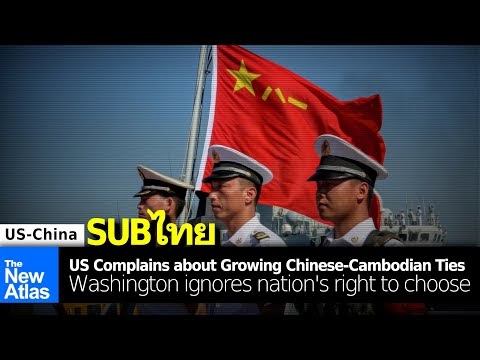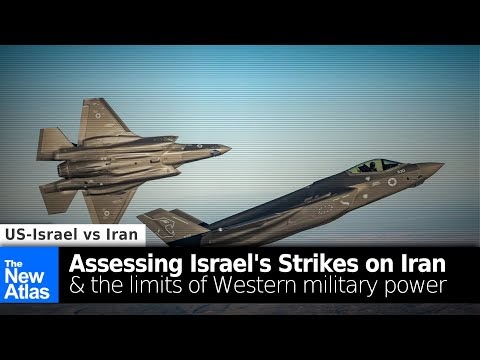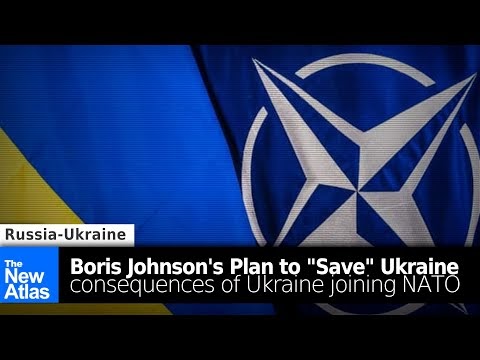Satellite images of Chinese warships docked at Cambodia’s Ream Naval Base for several months have prompted “questions” and “worries” over the possibility of a “new outpost for the Chinese navy on the Gulf of Thailand.”
No actual evidence has been presented by Western governments or its various think tanks, including the US government and arms industry-funded Center for Strategic and International Studies (CSIS) whose report documented the presence of Chinese warships at Ream Naval Base, to suggest a permanent Chinese military presence has been established in Cambodia.
The AP article notes:
Defense Ministry spokesperson Gen. Chhum Socheat told the AP [the Chinese warships] were due to take part in a joint Cambodian-Chinese military exercise later this month, and that they were also involved in training Cambodian sailors.
Even the most basic of military training can span a period of several months, and more advanced training can take up to a year or more.
AP cited Cambodian officials who claimed:
“We have been clear that Cambodia is not allowing any foreign forces to be deployed on its territory,” he said. “That won’t happen; that point is in our Constitution, and we are fully following it.”
To explain the root of US “worries,” AP would explain:
Controversy over Ream Naval Base initially arose in 2019 when The Wall Street Journal reported that an early draft of a reputed agreement seen by U.S. officials would allow China 30-year use of the base, where it would be able to post military personnel, store weapons and berth warships.
The base sits adjacent to the South China Sea, where China has aggressively asserted its claim to virtually the entire strategic waterway, and also provides easy access to the Malacca Straits, a critical shipping route leading from it to the Indian Ocean.
The U.S. has refused to recognize China’s sweeping claim and routinely conducts military maneuvers there to reinforce that they are international waters.
Ironically, it was CSIS who also published data regarding maritime shipping moving through the South China Sea Washington accuses China of threatening. The shipping is overwhelmingly moving to and from China itself. It is clear that China has no interest in disrupting its own maritime trade, Washington obviously does.
No explanation was provided by AP as to why the US believed it had any authority, jurisdiction, or say regarding what takes place within the sovereign borders of Cambodia regardless of whether the Chinese military presence is permanent or not, or across the rest of theAsia-Pacific region.
It should be repeated that the Asia-Pacific region is located on the opposite side of the planet from Washington, D.C.
AP does make one important admission as it concluded its article, pointing out that:
China only operates one acknowledged foreign military base, in the impoverished but strategically important Horn of Africa nation of Djibouti, but many believe that its military is busy establishing an overseas network.
The U.S. has more foreign military bases than any other country, including multiple facilities in the Asia-Pacific region.
This admission is key to both understanding the true nature of US “worries,” and the actual source of security threats in the Asia-Pacific region.
Among the many “foreign military bases” the United States maintains around the globe, a large number of them, home to tens of thousands of US forces, are located in the Asia-Pacific region and more specifically in South Korea, Japan, and increasingly the Philippines. These forces are admittedly part of a long-standing US foreign policy objective of encircling and containing China itself.
The US State Department through its Office of the Historian has archived a 1965 memorandum titled, “Courses of Action in Vietnam,” in which it admits:
The February decision to bomb North Vietnam and the July approval of Phase I deployments make sense only if they are in support of a long-run United States policy to contain Communist China.
The same memorandum admits:
There are three fronts to a long-run effort to contain China (realizing that the USSR “contains” China on the north and northwest): (a) the Japan-Korea front; (b) the India-Pakistan front; and (c) the Southeast Asia front.
The US has maintained efforts to encircle and contain China along these three fronts up to and including today.
The very Chinese activities cited as a justification for US military expansion thousands of miles from American shores in the Asia-Pacific region are in fact a response to this long-standing and continuous US policy of containment.
If the prospect of Chinese warships permanently stationed at a naval base in Cambodia is a “worry” for Washington, certainly tens of thousands of US forces scattered across a network of military bases along China’s periphery, closer to Chinese territory than America’s own shores, is a legitimate concern for Beijing.
The belligerent hypocrisy of US foreign policy runs deeper still.
AP, along with the Western experts it cited in its report, present a narrative in which Cambodia appears to somehow owe the collective West an explanation for supposed military cooperation taking place within its internationally recognized borders. Yet, the West itself has repeatedly asserted “the right to choose its own path” for any nation seeking to join NATO and not only cooperate militarily with the West, but be integrated into an active military alliance conducting wars of aggression around the globe.
Upon NATO’s official website under a post titled, “Setting the record straight: de-bunking Russian disinformation on NATO,” it claims:
The wording “NATO expansion” is already part of the myth. NATO did not hunt for new members or want to “expand eastward.” NATO respects every nation’s right to choose its own path. NATO membership is a decision for NATO Allies and those countries who wish to join alone.
If this were so, why wouldn’t this also apply to nations and any desired military cooperation with Russia and China? It appears that Washington, London, and Brussels insist on a nation’s “right to choose,” as long as it chooses NATO.
The “right to choose” NATO membership is itself a myth. Many nations have openly chosen neutrality instead, including pre-2014 Ukraine. Through what were admittedly US organized protests, governments supporting neutrality were removed from power, and client regimes eager to “choose” NATO installed in their place.
The Guardian in a 2004 article titled, “US campaign behind the turmoil in Kiev,” would admit just how extensive this type of political intervention was across a number of potential NATO members, and how the US repeatedly interfered in the internal political affairs of targeted nations to remove governments who were choosing “wrong.”
The article explains in regard to the Ukrainian protests in 2004 which would be repeated again in 2014:
…the campaign is an American creation, a sophisticated and brilliantly conceived exercise in western branding and mass marketing that, in four countries in four years, has been used to try to salvage rigged elections and topple unsavoury regimes.
Funded and organised by the US government, deploying US consultancies, pollsters, diplomats, the two big American parties and US non-government organisations, the campaign was first used in Europe in Belgrade in 2000 to beat Slobodan Milosevic at the ballot box.
Richard Miles, the US ambassador in Belgrade, played a key role. And by last year, as US ambassador in Tbilisi, he repeated the trick in Georgia, coaching Mikhail Saakashvili in how to bring down Eduard Shevardnadze.
Ten months after the success in Belgrade, the US ambassador in Minsk, Michael Kozak, a veteran of similar operations in central America, notably in Nicaragua, organised a near identical campaign to try to defeat the Belarus hardman, Alexander Lukashenko.
What is revealed is instead of nations having a “right to choose,” the United States and its NATO allies choose for targeted nations. Governments opting for neutrality are admittedly overthrown and replaced by those who will pursue NATO membership. The resulting decision is not a reflection of a nation’s sovereign foreign policy, but the undermining and usurpation of that sovereignty – the very sovereignty NATO claims it exists to uphold.
The resulting security crisis this process of coerced NATO expansion poses to the Russian Federation has prompted the resulting tensions and conflict that now consumes Ukraine, wider Europe, and is continuing to spread along Russia’s periphery into Central Asia.
In this context, regarding Cambodian-Chinese relations and the nature of military cooperation between the two nations, according to NATO and the nations that constitute it, Cambodia not only has the right to choose its alliances, any attempt to reverse these choices represents a threat to regional and even global security.
In reality, the United States is not opposed to Chinese-Cambodian military cooperation – whatever its true nature – because it believes it is a threat to stability or represents Chinese expansionism and growing “primacy,” but instead opposes such developments because they serve as an obstacle for Washington’s own military expansionism in the Asia-Pacific region, its own primacy over the region, and its desire to influence and undermine peace and stability with impunity.
Whatever the true nature is of Chinese-Cambodian military cooperation, US “worries” only further highlight the belligerent hypocrisy of Washington’s own foreign policy.
Washington and the rest of NATO insist that Ukraine’s ability to “choose” NATO membership must be respected, but Cambodia’s desire to choose China as a military partner is presented as unacceptable. The only commonality between these otherwise contradictory positions is that they both serve Washington’s interests rather than any of the other parties involved.
By 2024, China has become Cambodia’s largest trade partner, according to Khmer Times. Better relations with China also serve as Cambodia’s greatest chance of developing modern infrastructure in a nation destroyed by and struggling to rebuild after decades of US proxy wars and interference. It is clear that Cambodia’s decision to work closely with China serves its own best interests, but because this doesn’t serve Washington’s best interests, Cambodia has “chosen” wrong.
For Cambodia, it is clear that if it does not build both the internal capabilities and foreign alliances required to neutralize the same sort of US interference resulting in Ukraine’s political capture in 2014, Cambodia will likewise find important “choices” about its future decided for it. Just as in Europe following Ukraine’s political capture in 2014, Cambodia will find both its own national security and economic prosperity and that of the region within which it resides, upended.
Washington suggests Chinese-Cambodian military cooperation represents a threat to the wider region. In reality, Washington opposes it because it serves as an obstacle for Washington’s own desire to interfere in and threaten the Asia-Pacific with impunity.
Brian Berletic is a Bangkok-based geopolitical researcher and writer, especially for the online magazine “New Eastern Outlook”.

















